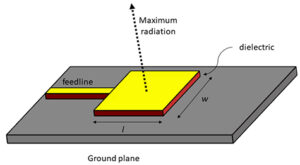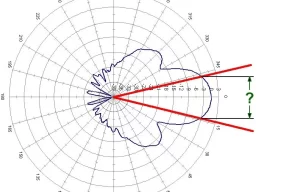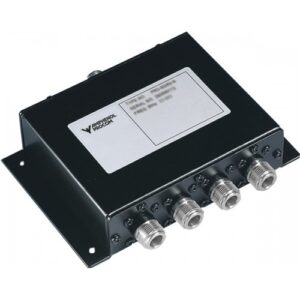Table of Contents
Turn off and disconnect the equipment
One should always make sure that the equipment is safely powered off before taking any steps to maintain it. It becames of absolute importance when cleaning the waveguide, as they might be a part of an electronic or other sensitive equipment that could be damaged by static electricity or an unsaved power surge, should someone turn it back on unexpectedly. When preparing to clean a waveguide within a radar, one should ensure that the power is turned off to prevent the risk of catching an electric shock or damaging the device. For a start, in an office or laboratory, this system would typically run on about 5 to 20 volts, somewhat more in the industry, where the safety systems need even more staying-up. That is why turning the power off is the first and one of the most important steps in preparing to maintain the equipment.
First, it is important to locate and disconnect all power sources that are currently connected to the equipment. Mainly, it means unbuckling the power cords from the wall sockets and disconnecting the internal power connectors. One also has to ensure that they are wearing anti-static wrist straps in order to safely prevent any possible static discharge. It is especially important when it comes to electronics-sensitive parts. Finally, use pliers instead of fingers when disconnecting the wire to minimize the risk of being affected by an electric charge.
One should make sure that the place is secured and irrelevant personnel knows that maintenance is being performed. It is hardly possible outside the household when one should actually place some yellow hazmat tape to remind пуслук and the courier that they should not turn the power back up. In a professional setting, make sure that you knew exactly what is going on.
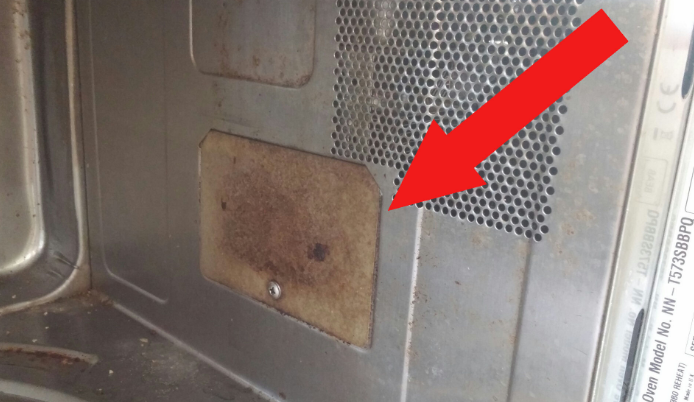
Access the waveguide
The step of accessing the waveguide is a delicate one that requires gentle handling of the equipment and understanding of the equipment layout. To access a waveguide, one must first deduce the access to it by determining the type of system the waveguide belongs to. Accordingly, this might be systems of telecommunications, radar systems, and satellite dishes. Every access has a different protocol depending on the design and energy for operation of the targeted equipment. It is recommended to secure the waveguide’s technical manual that, in most cases, is a circuit of the opened system, providing arrow and labels. In the standard satellite communication system, the waveguide is often found behind a service panel secured with screws. The service specifications differ for each kind of equipment under question.
The screws are also unique to each model, with a small type screw might be as small as 2 mm and the bigger ones design to cater to industrial equipment. Following the identification of the access derivative, the next procedure is to prepare the required tools in terms of screwdrivers, wrenches, and other electronic service tools. It is important to have the correct tools in order not to harm the equipment. For example, having a screwdriver precisely meeting the shape and size of the screw head helps maintain the considerable level of grip to control the torques not to strip away the screws—stripped screws are a big issue as they demand time recovery and reduced levels of equipment materials. Following the subsequent identification of access and specification, it is also important to take into account safety.
Not only must the power supply be turned off, but the worker is expected to discharge himself to prevent electrostatic discharge. Second, if the equipment has its power supply, then the worker must discharge it. High energy of kilowatts often persists in the system, and discharging it is important before removing or servicing the equipment. The time for access specification also varies, where the commercial example, satellite dish, takes about 15 minutes. The high-energy systems of radar demand over an hour to service.
Inspect for contaminants
Waveguide contamination inspection should be done in order to keep waveguide in the best shape, especially in such high precision systems as telecommunication or radar technologies. The goal is to detect any useless alien particles, moisture, or signs of corrosion that might degrade the waveguide function. There are several ways of waveguide inspection.
One can start with ordinary visual inspection from a light source. Dust, dirt, metal shavings, and sawdust could be found. As it is known from telecommunication theory, a fraction of a gram of dust can facilitate great signal attenuation. For example, the attenuation of a few hundred meters of waveguide with a signal loss of around 0.1 dB will be about 10 GHz, given a 0.5 mm dust particle. This is more than enough to degrade the waveguide performance but this can be seen. If waveguide is too lengthy, one can use an optical tool called an endoscope to detect contaminants hidden in the corners or at the welding spots.
Various magnifying devices can be used to provide a level of detail that is simply not possible to obtain by eye, making it much more convenient to inspect narrow waveguides. Endoscope is especially useful for long or complex systems.
There are also a number of tests for indirectly determining adverse effects such as contaminants. Direct measurements done, for example, using a vector network analyzer include VSWR and insertion loss. Higher than usual VSWR can indicate blockage or dirt. Some proportion of energy is returned instead of passing the waveguide, when it was merely reflected by a certain obstruction. For accurate waveguides, the VSWR should be around 1.05:1. Contaminated waveguides may, on the other hand, have 1.4:1, or even as high as 1.5:1, VSWR.
In the case of moisture and corrosion, it is especially useful since they make the waveguide a lossy dielectric meaning that its performance is tarnished. For example, some insignificant level of corrosion can increase the roughness of the waveguide’s inner surface, It might become to just a few microns, but, when it comes to high-frequency applications, inserting loss with the difference of such small values of surface smoothness can be more than 0.2 dB for a meter of waveguide.
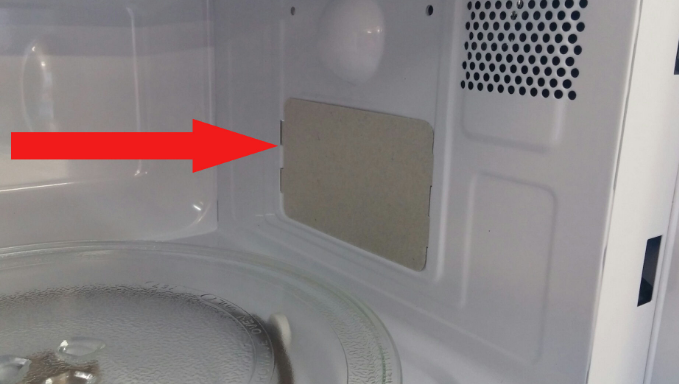
Dry cleaning method
The dry cleaning method for waveguides is crucial in keeping these components intact and retaining their performance in various environments where introducing moisture could be damaging. This technique is primarily a mechanical removal of dust and other dry contaminants, as its name suggests, so it does not involve any liquids.
Using cans of compressed air to blow out loose dust and particulates is an effective way. It provides a powerful and direct stream of air to dislodge the particles from the waveguide interior, which is especially applicable to more delicate or harder-to-reach spaces. One important note about using compressed air is to hold the can upright, as tilting it can result in blowing liquid propellant onto the electronic components, which is damaging. The pressure of compressed air from the can is typically 30 to 70 psi, which is adequate to clear the debris without damaging the core members and joints in the waveguide.
For particles that are harder to dislodge or those that are larger, using a soft-bristled brush would be beneficial. Ideally, this type of brush should be softer than the waveguide to make sure no scratches or abrasions will be present on its interior surfaces. A brush intended for cleaning electronic portable devices is typically the best option, as it is softer and non-abrasive, which is beneficial for the waveguide. Following the brushing process, wiping with a microfiber cloth can pick up any leftover dust.
For another means of dry cleaning waveguides, the use of lint-free wipes is beneficial. These wipes do not leave fibers or residues behind, which is crucial to keep the purity of the waveguide. If static electricity could be an issue, using slightly antistatic wipes would be beneficial to prevent the buildup of this. However, any of these dry cleaning tools should be used with caution, with the proper amount of pressure and controlled movements.
The chances of damaging the waveguide with these tools would otherwise be too high. Crossing a waveguide’s interior with abrasives can introduce micro-scratches into it, which can hinder its performance by creating unwanted reflections or losses of some signals. For example, even the light scratches on the guide’s surface can increase the insertion loss. The losses in the guide are typically expressed in decibels, and an increase of 0.1 dB caused by micro-scratches. This can be too damaging for high-frequency applications especially.
Wet cleaning method (if necessary)
The wet cleaning method may be applied in the situation when dry cleaning methods do not manage to remove all the necessary contaminants from the waveguide. Microprocessors are cleaned with the help of liquids that can wash away oily residues and heavy grime that petroleum ether and other cleaning agents cannot remove by themselves. The solvent used was isopropyl alcohol as it is low residue evaporates very quickly and it requires a concentration of at least 90% to prevent any potential damage from moisture.
In order to clean the waveguides inside and out, it is necessary to utilize isopropyl alcohol that ensures no residue will remain and evaporates fast to prevent moisture damage. This specific type of alcohol is implemented, as it is capable of dissolving a wide range of non-polar compounds including fingerprints, oil, grease ad motor oil, and most importantly flux residues between PC boards and other electronic components. Providing there is no manufacturer-specified solvent; it could also be replaced with acetone.
In order to clean waveguides using isopropyl alcohol, it is necessary to apply lint-free wipes or swabs. In such a case, the control of the volume of the solvent is critical, as it will not be efficient if the swab or wipe is not moist enough and too much liquid will be left behind. It is dangerous if the alcohol seeps into electronic interfaces and cavities. It is also necessary to cover the entirety of the waveguide by rubbing the solvent with smooth long length strokes.
The cleaning process includes the application of isopropyl alcohol in strokes along the length of the waveguide dorsum and in swabs into smaller waveguide components that the wipe could not reach. It is also necessary to swab ending plates for better absorption of the extra solvent that must not be pooled at the bottom of the member and to assure further waveguide wetness. After wet cleaning, the wire is to be left out in order to dry completely. At room temperature (25 degrees Celsius), isopropyl alcohol should dry over 10-15 minutes. If the drying process must be fast forwarded, then a clean, dry air source must be blown using soft breath on the wet components. This would have evaporation levels specific to humidity and airflow, but the steam must be apparent.
In case any isopropyl alcohol is used, it is necessary to perform this action in a properly ventilated area to avoid the inhalation of ethanol fumes. Moreover, all sources of ignition are to be removed from the workplace, as isopropyl alcohol is highly flammable.
Dry the waveguide
One of the critical challenges to address after every wet cleaning procedure is drying the waveguide. Ensuring that the device is completely dry is crucial for the prevention of potential damage or negative influence of water or cleaning solvents. Moisture can cause corrosion and signal deterioration in some systems, especially in high frequency ones. The devices can be made completely dry in a variety of ways, such as natural evaporation, utilizing compressed air, or applying heat.
The first method is so-called natural evaporation. After cleaning the device with isopropyl alcohol or any other solvent, the range should be left open to air. The most common cleaning substance is isopropyl alcohol because it is one of the least corrosive toxics and is safe for the users and the environment. Isopropyl alcohol can naturally evaporate at room temperatures, around 25 degrees Celsius, in no more than 10-15 minutes. However, there can be many factors influencing how fast evaporation will occur, such as temperature, humidity, and airflow. If such openings can resist, it may be helpful to improve the draft exiting the working area.
The second one is the use of compressed air. This method can be beneficial because it is one of the fastest ways to ensure the tide of the waveguide after wet cleaning. Compressed air nozzles should be pointed at the cleaned surface, and the tide should be constant. A typical compressed air canister worthy of a task like such gives an air pulse at around 30-70 psi. Although high enough not to cause harm to the waveguide, this is sufficient to wipe away the vestiges of the solvent without moving the towel back and forth, possibly soiling it again. If these two methods are ineffective, one can use heat from a heat gun or a hair dryer at the lowest level. A safe overheat threshold is 10-15 centimeters of distance from the device, and the temperature should never exceed 40 degrees Celsius.
In order to optimize the procedure of drying a waveguide, it is recommended to combine visual inspection with its instrumental counterpart. After the cleaning procedure, the maintenance rangers can scan the device, trying to detect any visible moisture. Alternatively, they may use a moisture meter to ensure that their procedure meets the job order. Finally, if a device is going to be used for a critical application, the moisture should be less than 5%, which can only be detected by a moisture meter.

